The arts and design industry in Singapore
Being desk-bound from 9–6 during your weekday hustle isn’t particularly appealing to everyone, especially those that are naturally more right-brained. That’s why such individuals tend to choose a career in the arts and design industry, diving into a job that doubles as a conduit that keeps their creative cogs turning.
If having a creative outlet for an occupation sounds inviting to you, here’s the lowdown on how to thrive in the arts and design industry. We spoke to LASALLE College of the Arts graduates, students and staff who’ve been there and done that, to gather their anecdotes and advice. Read on to find out nine tips that will help pave your way in the creative sector.
1. Source for short-term internships instead of part-time jobs
 Interning at a company can equip you with industry-relevant skills to ease you into the working world.
Interning at a company can equip you with industry-relevant skills to ease you into the working world.
If you’re still schooling, the best way to spend those lengthy term breaks is to source for short-term internships instead of slogging it out at a part-time job. LASALLE’s Director of Industry and Community Engagement Steve Golden echoes this sentiment, as students stand to gain valuable experience by interning in a company aligned with their field of interests.
“It’s absolutely imperative these days,” notes Steve. “LASALLE’s Graduate Employment Survey results noted a double digit jump for our 2019 graduates, and the only variable that changed was the formalised extension of the internship programme to them.”
 Steve Golden oversees the careers centre, internship programmes and industry collaborations at LASALLE. He is also an accomplished photographer who has published a photo book on Myanmar.
Steve Golden oversees the careers centre, internship programmes and industry collaborations at LASALLE. He is also an accomplished photographer who has published a photo book on Myanmar.
Image credit: Steve Golden
In order to secure a meaningful internship, Steve advises that some personal soul-searching will help streamline the process: “The skills that you need to get an internship are exactly the same skills you employ when you’re doing a job hunt. Students need to learn to know themselves and what they’re looking for, and that should culminate in a search that leads to great internships.”
LASALLE also provides an online career portal to help students align their interest and skills to a potential employer.
2. Attend & network in community events for opportunities
 Nikki Homaili with her Umami colleagues and artists attending Spotify’s 5th anniversary event at Zouk in 2018
Nikki Homaili with her Umami colleagues and artists attending Spotify’s 5th anniversary event at Zouk in 2018
Image credit: Nikki Homaili
If there’s one soft skill that’s essential in the arts industry, it’s networking. According to Nikki Homaili, a graduate with a Bachelors in Arts Management, attending and networking at community events help to build rapport with other industry professionals in this tight-knit sector.
Speaking from her experience as an artist manager for local singer-songwriters Linying and Marian Carmel, Nikki says: “I think networking is super important in the arts industry, because the sector is so small in Singapore. Business-wise, there are always artists who want to work with creatives for their cover art or directors for their music videos, so having connections really helps what you want to achieve.”
After working at music labels like Umami Records and Foundation Music, Nikki is now doing digital marketing for agency RELE. Having networks and establishing a good reputation for yourself with others could even shave off time from scrolling through job sites.
Pro tip: To up your networking game, consider joining local Facebook groups like the SG COVID-19 Creative/Cultural Professionals & Freelancers Support Group. Populated by local creatives who occasionally post job listings, there are opportunities for you to mingle around and further experience in the industry.
3. Be multidisciplinary by trying various roles within your interest
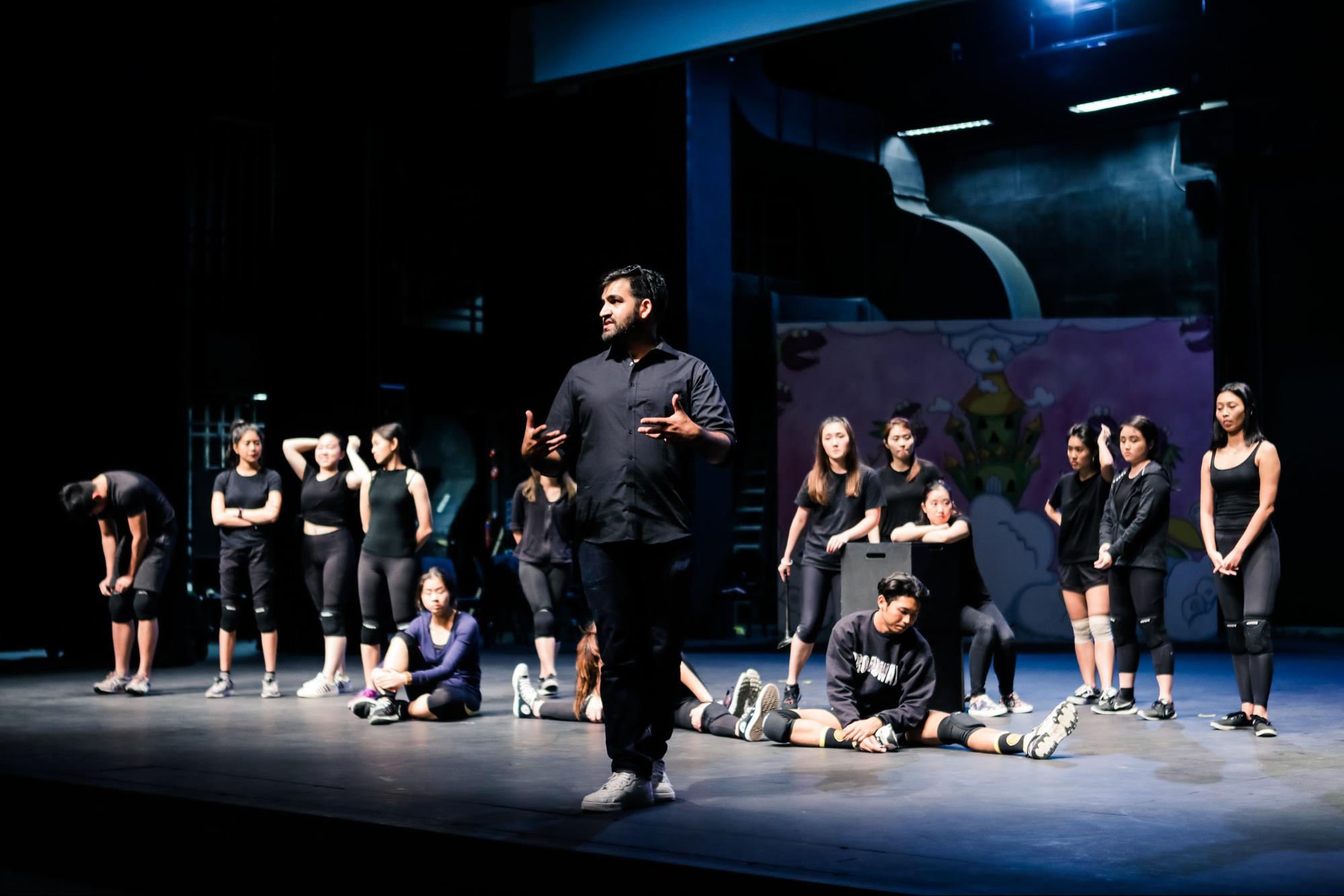 Dayal Singh teaches Musical Theatre at LASALLE and works internationally across a wide range of areas as a producer, actor, singer, writer, filmmaker and corporate trainer.
Dayal Singh teaches Musical Theatre at LASALLE and works internationally across a wide range of areas as a producer, actor, singer, writer, filmmaker and corporate trainer.
Image credit: LASALLE College of the Arts
Even a niche industry like the performing arts can comprise multiple facets like acting, directing, scriptwriting and so on. From a man who’s tried it all, Dayal Singh – Programme Leader for Musical Theatre at LASALLE – suggests students be multidisciplinary by dabbling in all facets of the industry.
“I love being in a creative environment, so whether it be on stage, behind the camera or producing, I love all the elements that make a project come together,” says Dayal. “I think the balance of switching between different sorts of roles keeps me stimulated and engaged.”
Dayal adds that any creative should dip their toes in a myriad of roles to soak up as much experience as possible: “I don’t like the normalcy of a 9–6 job, so though I was thrown into the deep end every single time, I relished those moments as I got to grips with various aspects of theatre.”
4. Share your knowledge with fellow industry players
 Timothy O’Dwyer (left) is a world-renowned saxophonist, composer, soundpainter and interdisciplinary collaborator.
Timothy O’Dwyer (left) is a world-renowned saxophonist, composer, soundpainter and interdisciplinary collaborator.
Image credit: LASALLE College of the Arts
There’s no better way to learn from others than to continually engage in meaningful conversations with fellow industry professionals. As you share your own knowledge with others, there’s no doubt you’ll get morsels of wisdom from other professionals in return.
To derive the best insights from conversations, Timothy O’Dwyer, Head of School of Contemporary Music at LASALLE, elaborates that students need to be actively engaged instead of passively spectating. “A lot of young people at the moment shy away from conversation. You’re in a position to understand better the more you ask questions and put yourself out there.”
5. Widen your career choices in alternative industries
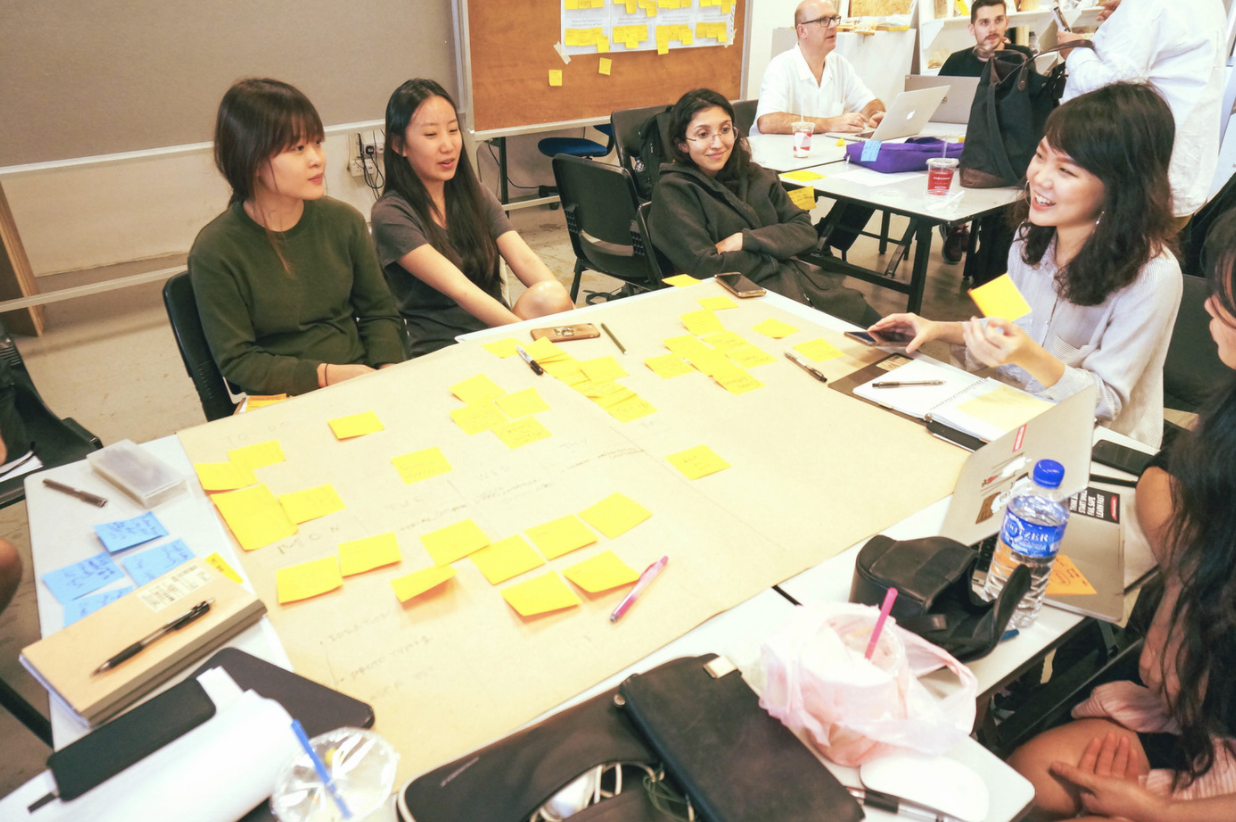 Shaina Tan (far right) graduated top of her cohort in the Bachelors in Design Communication in 2019
Shaina Tan (far right) graduated top of her cohort in the Bachelors in Design Communication in 2019
Image credit: Shaina Tan
Contrary to popular belief, you aren’t tied down to a career solely in the arts and design industry if you choose to pursue either of these disciplines. Shaina Tan, who graduated with a Bachelors in Design Communication, is an apt case in point, as she utilises her repertoire of visual design skills in her current role as Service Designer at Tan Tock Seng Hospital. Yes, hospitals need designers too!
“I think healthcare is just one of the non-traditional industries which values the adoption of design practice in their approach to problem-solving,” remarks Shaina. “We work with a lot of stakeholders to use design methodologies to solve problems, improve processes and experiences within the hospital.”
Just like healthcare, other corporations like banks are looking for designers to aid with their product development and improve customer experience. Shaina adds that the service design sector, in particular, is slowly becoming more robust in Singapore, so you can always look at other industries for a job and not have to restrict your career prospects to the creative industries.
6. Work on refining your practice outside work
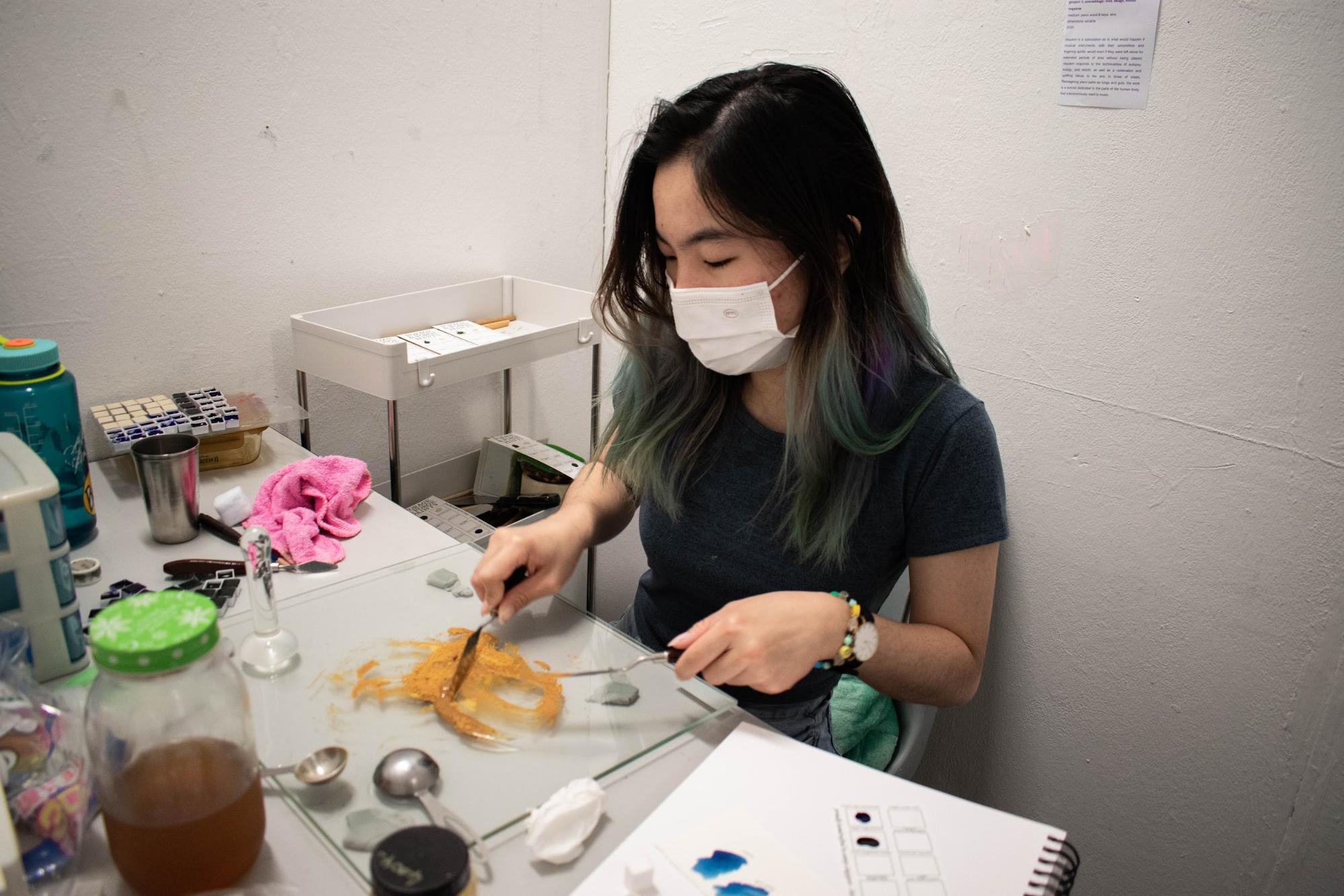 Image credit: Annjee Teo
Image credit: Annjee Teo
Whether your passion lies in design or playing an instrument, the old adage ‘practise, practise, practise’ holds true. The beauty about being in the arts industry is that there’s a high chance that your passion translates into a profession, so it won’t feel as much like a chore to keep on doing something you love outside working hours.
Take Annjee Teo for example. A Year 3 student pursuing a Diploma in Fine Arts, her love for painting transcends beyond just her studies, as she runs her own handmade watercolour paint startup Forage & Forge Paints. “I had this epiphany during the Circuit Breaker period, so I made my own paints and then ended up with more than I knew what to do with,” says Annjee.
Her personal venture has also come full circle, as Annjee plans to apply her personal research on colour history and paint propensities in her final year project. Plus, this passion project also led Annjee to uncover a newfound love for artisanal paints “I can spend an entire day painting and researching, say 17 or 18 hours, and I won’t even know,” she laughs.
7. Create an e-portfolio to showcase your works
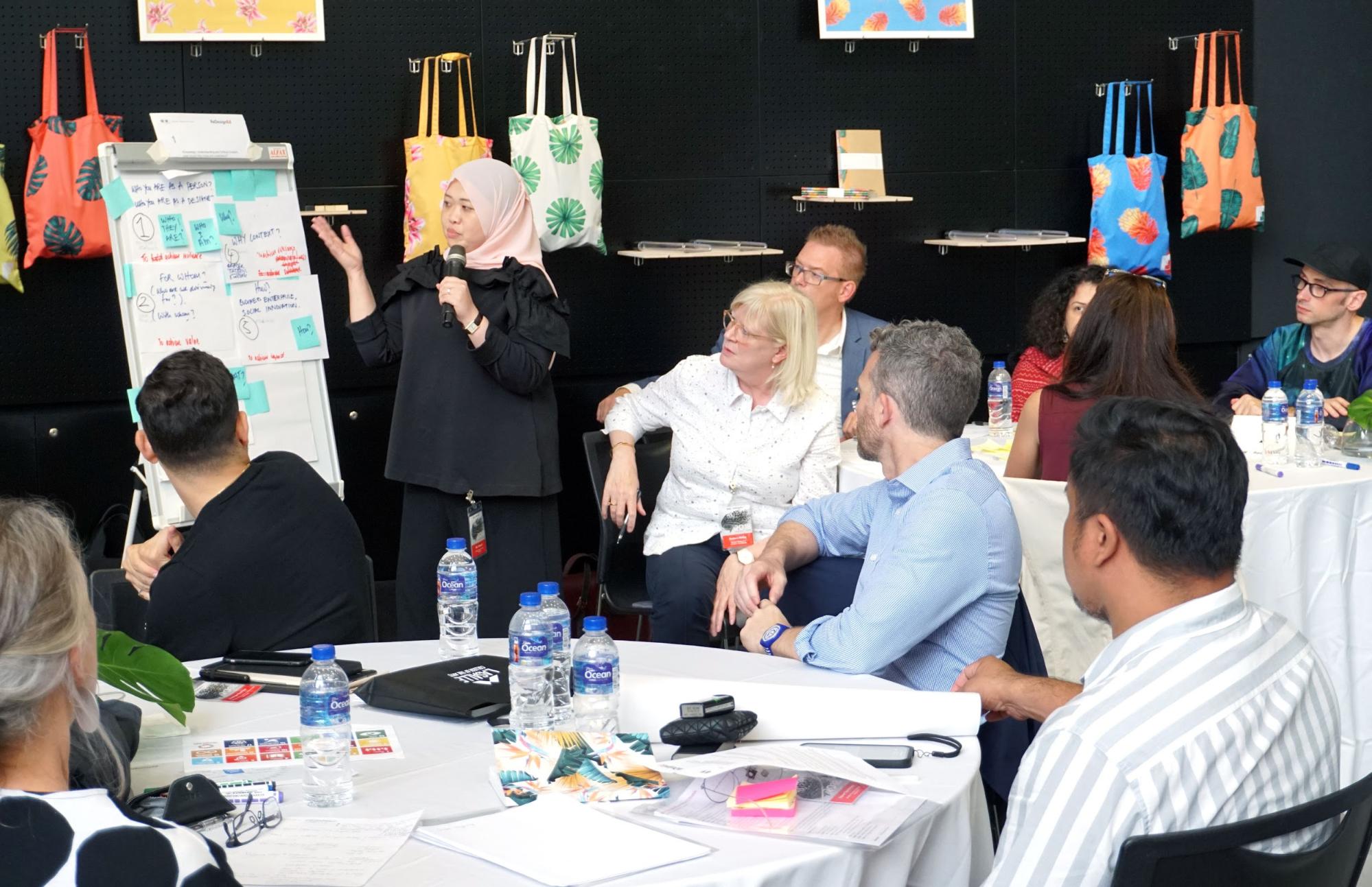 Nur Hidayah (pictured presenting) has amassed nearly 20 years of teaching experience at LASALLE College of the Arts.
Nur Hidayah (pictured presenting) has amassed nearly 20 years of teaching experience at LASALLE College of the Arts.
Image credit: LASALLE College of the Arts
In order to impress interviewers, especially in today’s digital-heavy world, having an e-portfolio is a necessity to showcase your works and skill sets. And Nur Hidayah, Dean of the Faculty of Design, shared some of the criteria she uses to assess prospective students.
Nur says: “If you’re applying for a Design Communication course, your portfolio needn’t be filled with all graphic designs. We always encourage applicants to have a variety of works – collages, drawings, photography and even writing. It’s important that you showcase these different elements as design is multidisciplinary.”
Having a diversified portfolio is key to showing the breadth of your range of work, so be sure to highlight your other non-design works to score some extra brownie points.
Pro tip: With customisable themes and free-to-publish domains, website builders like Weebly and Wix are great intuitive tools to get crackin’ on your e-portfolio.
8. Shadow creative professionals to gain firsthand experience
 If photography or camera operations interest you, tagging along for shoots are a great way to learn more about on-the-job skills.
If photography or camera operations interest you, tagging along for shoots are a great way to learn more about on-the-job skills.
Image credit: @TheSmartLocal
Just like any other career path, the arts sector has its own set of tough aspects that any aspiring creative has to weather through. That’s why Jordan Ong, a Year 2 student currently studying for a Diploma in Fashion, recommends shadowing creative professionals to get a better gauge of the realities of the industry.
“For example, if you’ve got a friend who’s a photographer or in the creative industry, ask if you can follow them on a shoot or one of their projects,” Jordan explains. “Offer to help them out with petty tasks, and you might be able to learn something on the job and get a taste of how it’s like.”
 Jordan tried his hand at other courses like Banking and Game Development prior to finding his calling while pursuing a Diploma in Fashion at LASALLE
Jordan tried his hand at other courses like Banking and Game Development prior to finding his calling while pursuing a Diploma in Fashion at LASALLE
Image credit: Jordan Ong
In the case of photographers and filmmakers, Jordan mentions that going on shoots will help you suss out the unseen aspects of the job, like impromptu set mishaps and long working hours. Following these seasoned creatives helps you to improve too, as you’ll get to witness how they navigate these problems in real-time and pick up skills while observing them.
9. Apply for anything that sparks interest
 Even if there seems to be no suitable jobs on the market, you should still make the effort to contact your ideal companies on the off-chance that there’s an opening available.
Even if there seems to be no suitable jobs on the market, you should still make the effort to contact your ideal companies on the off-chance that there’s an opening available.
When it comes to the creative industry, opportunities aren’t always going to present themselves to you on a silver platter. That’s why the onus is on you to take the initiative and apply for anything that sparks interest, even if there seems to be a lack of openings.
Chris Shaw, LASALLE’s Head of the Puttnam School of Film & Animation, attests to this, citing the moment when he took it upon himself to call the Walt Disney Company in 1987 as his breakthrough in the animation industry.
He reminisced, “I took the risk in the first year of my degree to call Disney on an impromptu basis. I was lucky they were hiring interns at the time to work on ‘Who Framed Roger Rabbit?’, and I did rather well so I ended up staying [at the company] for three years.”
Referencing his time in Disney, Chris mentions he “hopscotched through departments”, found good mentors and dabbled in various aspects of the animation process like painting mattes and shadows, character clean up, and even in the ink and paint department.
Thanks to his innate curiosity, Chris managed to soak up more experience than he’d imagined during his three-year stint. “My capacity for learning wasn’t limited to what I was assigned, but what I exposed myself to as well,” he remarked.
Other than making the most of opportunities they are presented with, Chris also recommends students widen their imagination and be exposed to diverse perspectives through activities such as reading, travelling, attending film screenings and exhibitions.
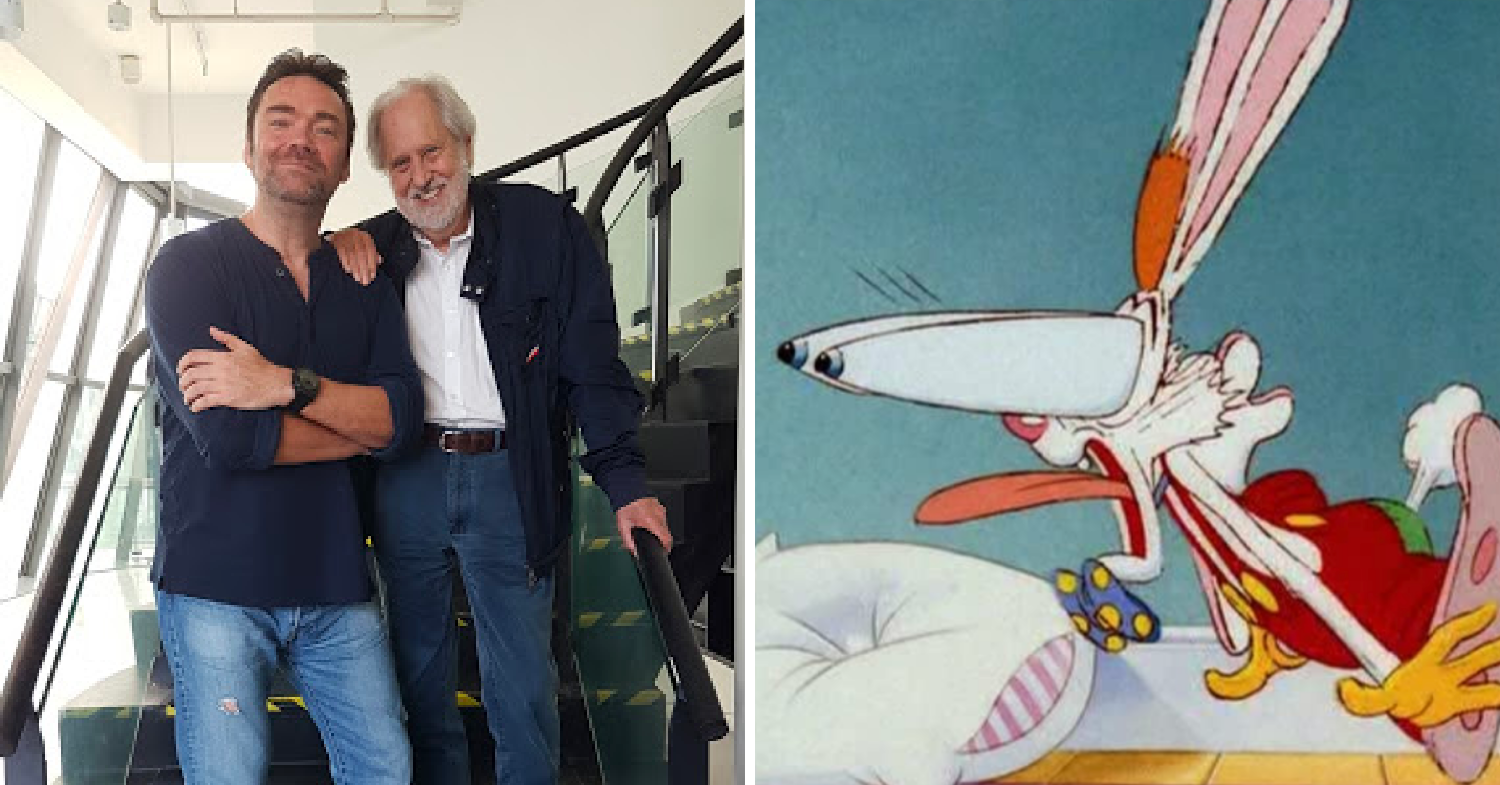 Chris Shaw (left, seen here with Oscar-winning producer Lord David Puttnam) worked on the 1988 film ‘Who Framed Roger Rabbit?’, which grossed nearly US$330 million in the global box office.
Chris Shaw (left, seen here with Oscar-winning producer Lord David Puttnam) worked on the 1988 film ‘Who Framed Roger Rabbit?’, which grossed nearly US$330 million in the global box office.
Image adapted from: Chris Shaw, IMDB
Chris’s story is testament that in order to land your dream job, you need to take decisive action. So if you’ve got a studio or company you’d like to work at, take a leap of faith and who knows, there could be an opening available for you.
Carve out a career in the arts & design industry with LASALLE College of the Arts
 Image credit: @lasalle.sg
Image credit: @lasalle.sg
With a little fervour and grit, you’ll be able to make your mark on the arts and design industry in Singapore and sustain a career as a creative professional for years to come – just like these graduates and insiders have shared.
If you’re keen on setting your first foot through the creative industry’s doors, enrolling in a course at LASALLE College of the Arts is your best bet. With applications for their August 2021 intake now open till 30th March 2021.
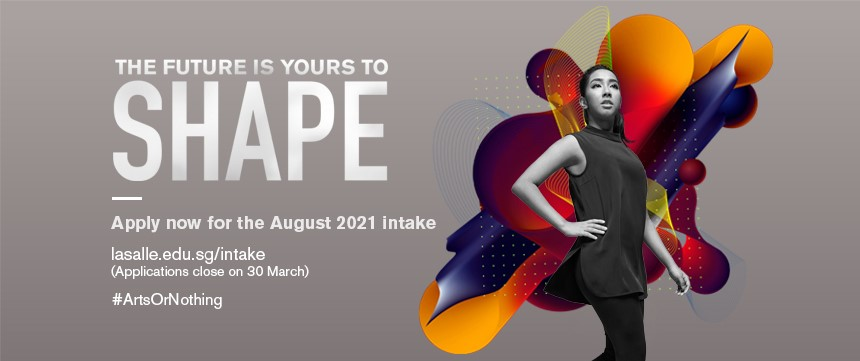 Image credit: @lasalle.sg
Image credit: @lasalle.sg
With a wide array of BA (Hons) and Diploma programmes, there’s bound to be a programme that matches your creative interests. Check out the full list of programmes available on LASALLE’s website, and pop by the Admissions page if you want to find out more about entry requirements for specific programmes.
Joining LASALLE College of the Arts will bring out the best of your creative potential and start you on your journey to make a difference in various sectors. And hey, make sure to keep these nine tips in mind so your path through the industry can be that much breezier.
Find out more about LASALLE’s course offerings here
This post was brought to you by LASALLE College of the Arts. Responses have been edited for grammar and clarity.
Cover image adapted from (RHS): Annjee Teo





More Stories
Hertz survey shows that electric car rentals could help increase EV purchases
Throw Down Just $50 for This HyperX Gaming Headset With Mic
Google releases vulnerability scanner for open-source software, backed by community-editable database